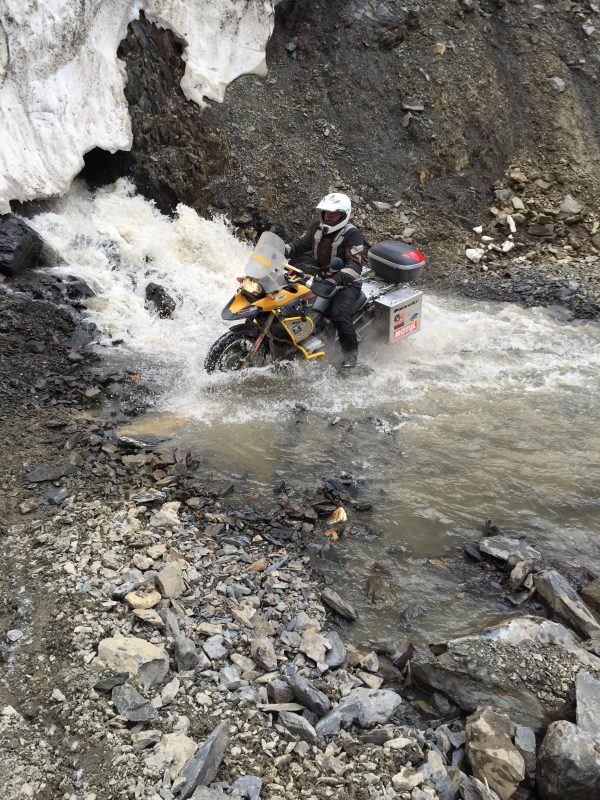05 Jun
- 2015 -
Through the night, the rain keeps pouring over the soppy Georgian mountains. In the morning, we take in the sky not without worry, but we decide that this is the day to try and conquer the mountain pass. We are treated to an asphalt road from Akhmeta to Lechuri. We try to ask every bypasser about the conditions on the mountain pass.

Usually the conversation goes like this: ‘Excuse me, is the pass open? –Of course, dear, no problems!’. Or, the other way: ‘Are you crazy, honey? You won’t pass it on a motorcycle.’
After Lechuri, there’s an army supply base by the side of the road and they are preparing firewood for the winter. It’s 11 a.m., the men all seem already plastered, but this doesn’t mean they don’t use their advanced equipment. We arrange to leave some of our belongings with them, so our rides would be lighter. We still have one last liquor bottle left and we give it to a huge, dark Georgian with a large cross pendant. The others call him Obama. ‘The nickname stuck to me because I’m so dark,’ Gogi, who was born in the mountains of Racha, laughs.
From here, we have to ride 60 km to Omalo, but the first hardships start before that. Ahead of us, a large waterfall appears. The river is ~20 m wide and quite rapid. It’s hard to judge the level of difficulty because the river isn’t actually that deep, it’s only up to your knees. I’m also not sure about where exactly to cross the river, because the spot with the least rocks is only 2m from the waterfall. I think the strength of the current isn’t powerful enough to pose serious issues even if I fall. Osis refuses to go, Normunds is doubtful. I swiftly cross the river as the first one and my companions do the same after an emotional argument. We can continue our journey.
The next obstacle which can definately cause some problems in Spring, are the cattle droves which are being taken to the green fields of Tusheti. The rocky ascent isn’t easy for the motorcycles, but when you have to get through a horde of cows, it puts extra stress on the clutch pedal. There are many landslides on the road and we can’t see the end of them, even with the bulldozers working. At one of the larger landslides we meet travellers with from the Netherlands with a SUV. They are trying to figure out how to turn their car in the other direction on the narrow road because they won’t try to cross the dangerous landslide. And they are doing the right thing. It’s easier with a motorcycle, but you still have to be careful.
Driving on a road like this alone isn’t advisable. 10 kilometres from the mountain pass, we get more information from a knowledgeable bulldozer worker. The experienced man has been working here for over a year and tells us that the snow was bulldozed on northern site a week ago, but this only works for cows and shepherds on horseback. He says it isn’t enough to cross the pass with a car or a motorcycle. We still go to see it with our own eyes. A few kilometres before the meteorological station, which is the highest point of the pass, over 3000 m, there are no other vehicles on the road with the exception of bulldozers. At one point, a dying cow is lying on the road. Swarms of flies and two huge mountain eagles are already there.